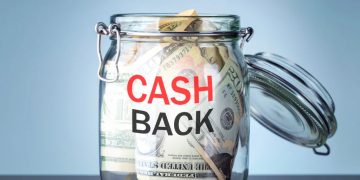Expense Tracking Habits: Must-Have Savings Tips to Save $500/Month
Expense Tracking is one of the most effective strategies to gain control over your finances and boost your savings. By consistently monitoring where your money goes, you can identify unnecessary expenditures and make informed decisions to improve your financial health. If saving $500 a month sounds like a challenge, developing practical expense tracking habits paired with smart savings tips can turn this goal into an achievable reality.
The Importance of Expense Tracking for Savings
Many people overlook the power of simply knowing how they spend their money. ExpenseTracking helps you see a clear picture of your cash flow—what’s coming in, what’s going out, and where leaks exist in your budget. Without this insight, cutting expenses is a guessing game, often leading to frustration and failure.
By tracking expenses, you become aware of your spending patterns, and this awareness encourages smarter spending decisions. You begin prioritizing needs over wants and can more easily spot opportunities to cut back, making it a crucial step toward saving a significant amount like $500 every month.
How to Start Effective Expense Tracking
Starting expense tracking doesn’t require complex tools or apps; it starts with commitment and consistency. Here are some simple steps to initiate this habit:
– Choose Your Tracking Method: You can use a dedicated expense tracking app, a spreadsheet, or even a notebook. The choice depends on what feels most intuitive for you.
– Record Every Purchase: Get into the habit of logging every single expense, no matter how small. That morning coffee or a quick snack adds up!
– Categorize Expenses: Group your spending into categories like groceries, transportation, dining, entertainment, subscriptions, and bills. This organization helps identify which areas you can trim.
– Review Weekly: Set aside time every week to review your spending. This reflection will reinforce positive habits and highlight areas for improvement.
Must-Have Savings Tips to Save $500/Month
Once you have a good handle on your expenses, you can implement smart savings tactics strategically. Here are some proven tips:
Cut Back on Subscriptions and Memberships
Streaming services, gym memberships, app subscriptions—it’s easy to lose track of these recurring charges. ExpenseTracking will reveal which subscriptions you rarely use. Canceling or pausing these can save you $50-$100 a month or more.
Set a Grocery Budget and Shop Smart
Groceries often take up a large chunk of monthly spending. Planning your meals, making shopping lists, and using coupons or store loyalty programs help reduce food expenses. Avoid impulse buys by sticking to your list.
Reduce Dining Out and Takeout
Eating out is convenient but costly. Replace a few weekly restaurant meals with home-cooked dinners. Even saving $10 per meal twice a week can contribute up to $80 in monthly savings.
Use Public Transportation or Carpool
Transportation costs —fuel, parking, tolls— can quickly add up. If possible, switch to public transit, bike, or carpool. Reducing daily driving expenses by $5 per day can save you around $100 a month.
Limit Impulse Purchases
Impulse buying is a significant budget breaker. Implement a “24-hour rule”: wait a day before making non-essential purchases. This simple practice helps curb unnecessary spending.
Automate Your Savings
Consider setting up an automatic transfer of at least $500 to a dedicated savings account right after payday. Automating savings ensures you don’t accidentally spend what you intend to save.
Tracking Progress and Staying Motivated
Tracking your savings alongside expenses allows you to celebrate milestones and adjust strategies if needed. You could create a monthly savings chart or set financial goals with rewards for achieving targets.
ExpenseTracking is not just about cutting costs; it’s about understanding your financial behavior and building a sustainable saving mindset. Many people find it motivating to see their savings grow over time, reinforcing the value of the habits they’ve developed.
Final Thoughts: The Path to Saving $500 a Month
Achieving $500 in monthly savings requires a combination of awareness, discipline, and smart habits—all rooted in effective expense tracking. By consciously monitoring your spending and adopting practical savings tips, you can make meaningful changes without feeling deprived.
Remember, the key is consistency. ExpenseTracking may seem tedious at first, but as it becomes a regular part of your routine, managing your finances and achieving your savings goals will feel natural and rewarding. Start small, stay committed and watch your financial confidence—and savings—grow steadily month after month.





































